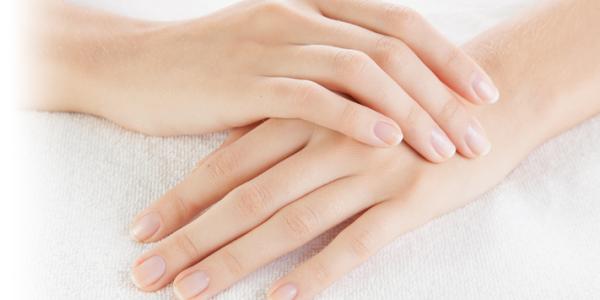
If you know what to look for, your nail health can tell you a lot about possible underlying health concerns.
We clip them, paint them and occasionally bite them — but are we paying our nails enough attention? If you’ve never inspected their color, thickness or texture, you might want to start. It can be easy to ignore your nail health, but their condition can actually provide you with clues about your overall health.
Before you start looking for health clues in your nails, it’s important to make sure you are practicing good nail care. No matter your age or gender, start with these tips to keep your nails in tip top shape:
Skip
Do’s:
- Trim regularly: Clip your nails straight with softly rounded corners to avoid ingrown nails. You can also carefully cut any hangnails, but try to avoid cutting your cuticles.
- Moisturize often: To prevent splitting, make sure you moisturize your nails and cuticles often.
- Clean underneath: It is essential to regularly remove the buildup underneath your nails and wash away any germs.
- Eat healthy: Strong nails get necessary nutrients from a variety of fruits, vegetables, whole grains and lean proteins. Make sure you’re including these healthy foods in your diet.
Don’ts:
- Don’t bite or tear your nails: These actions damage the nail bed — sometimes even permanently.
- Don’t pull hangnails or cuticles: This increases your risk of infection by creating openings in the skin.
- Don’t overuse nail polish remover: Acetone is damaging to the nail bed. If you need to remove nail polish, make sure to use an acetone-free remover.
- Don’t use your nails as a tool: This causes damage that can take months to repair.
By practicing good nail health, you get a visual reflection of your overall health right in front of you. While nails can develop harmless ridges or lines due to age or injury, not all nail changes are normal. Consult your provider if you notice changes such as:
- Brittleness: Brittle or splitting nails could be a result of drug usage, nail trauma or nutrient deficiencies; they could also indicate signs of anemia or thyroid disorder. To prevent nail brittleness, consider increasing your intake of amino acids and zinc.
- Discoloration: Discoloration could simply be the result of injury or age, however, it could also indicate a variety of underlying issues. Dark lines or distinct white streaks and spots on the nail could be signs of a chronic disease. If a single nail shows signs of prolonged, abnormal discoloration, it is time to consult your doctor.
- Grooves or gaps: Often called Beau’s Lines, grooves and gaps are the most common nail symptoms associated with systemic disease. They could be a response to intense cold, nail trauma or other extreme body stressors like heart attack and pneumonia. Small cracks or “pitting” can also be a sign of psoriasis, a common skin condition.
Your nail health could indicate an underlying issue, but more often, changes in nail health are nothing to be concerned about and will resolve on their own. Remember to be patient since it may take months for a damaged nail to regenerate and repair itself.
This article first appeared in the April 2020 edition of the HealthPerks newsletter.

